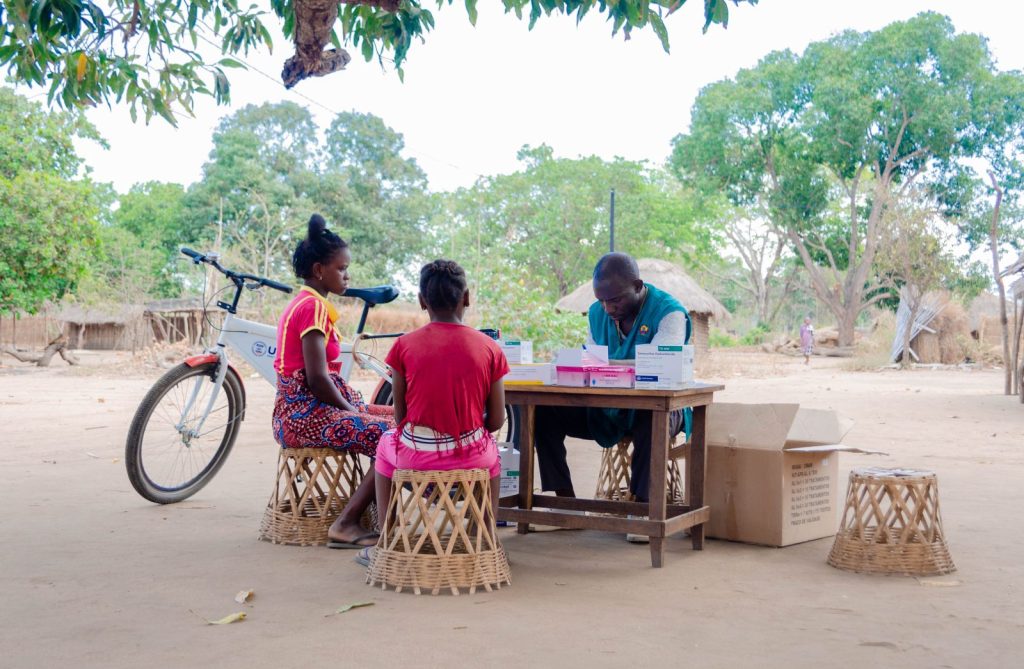Health and development indicators in Mozambique are still far from ideal as the country struggles with recurrent natural disasters, civil unrest and threats from armed groups. Poverty is widespread and the country has one of the highest maternal and child mortality rates in the world.
These challenges are significant in the northern part of the country, particularly Cabo Delgado Province, which has been severely affected by violence and insecurity since 2017 due to attacks by organised armed groups on local civilians and army forces. This has resulted in the mass displacement of the population with more than 429,000 people estimated to be internally displaced[1].
Health services have also been affected by violence; 22 health facilities (15%) were vandalised and are not functional and 20 require rehabilitation[2], while 35% of health facilities have no access to water[3]. This situation puts huge pressure on the few health units in operation, and limits access to primary health care services for thousands of people.
There are only 750 Community Health Workers (CHW) in Cabo Delgado Province, who are often the first point of contact for primary healthcare services. This is low considering that each CHW is expected to cover a population of 1,000 people and Cabo Delgado has a total population of 2,333,278[4]. Of these, 429,000 people are internally displaced and live in unsanitary conditions more exposed to vector-borne diseases such as malaria and dengue fever.
Access to clean water remains a challenge for Mozambique in general, with only 13% of the population having access to clean water services and 32% using at least basic sanitation services[5]. In Cabo Delgado, the situation is exacerbated by population displacement and cyclones that have destroyed the available water and sanitation systems, as reported by OCHA in April 2025.[6]
Recently, the Cabo Delgado Health Cluster published alarming data reporting a 34% increase in malaria cases in 2025 compared to the same period in 2024[7].
These figures reflect the devastating effect that a lack of access to primary healthcare and adequate water and sanitation facilities has on the lives of the population of Cabo Delgado. Malaria causes 597,000 deaths worldwide (WHO report 2024), but it can be treated if cases are quickly identified in health centres and by community health workers that are close to the populations.
In Cabo Delgado the reduced number of health units, which was often far from the communities they serve, make it hugely challenging to access primary healthcare. Community health workers cannot reach everyone, which creates delays or makes it impossible to diagnose and treat malaria and other diseases.
The link between malnutrition and infectious diseases is well known and usually occurs as a vicious cycle. Data reported by UNICEF in 2024[8] indicate that chronic malnutrition in Cabo Delgado affects between 35% and 50% of children (varying between districts) aged 0-5 years. This is a very high figure, even compared to the national context, where the chronic malnutrition rate is 34% for the same age group.
[1] IOM Displacement Tracking Matrix Round 22. April 2025
[2] Northern Mozambique Humanitarian Response – Health Cluster Bulletin No.2 (February 2024)
[3] HeRAMS Moçambique Cabo Delgado Actualizar Relatório Agosto 2024
[4] INE – Censos da População 2017
[5] Children and Youth in Moçambique – UNICEF Factsheet – March 2025
[6] Humanitarian Response to escalating Displacement caused by NSAG attacks in Cabo Delgado Situation Report #1 As of 25 April 2025
[7] Health Cluster Bulletin with data from the Provincial Health Directorate – May 2025
[8] Resultados preliminares dos inquéritos SMART+, Distritos de Mocimboa da Praia, Palma, Chiure e Mueda , Província de Cabo Delgado, Moçambique, Abril e Maio 2024

